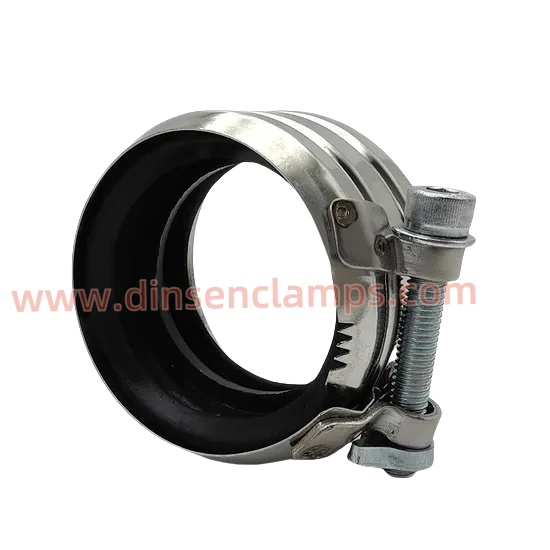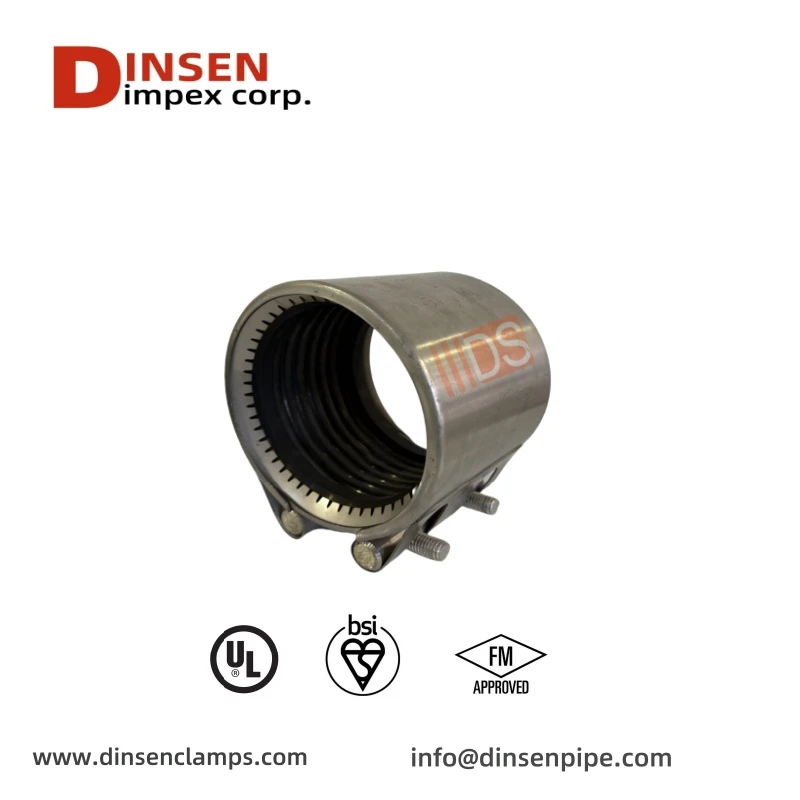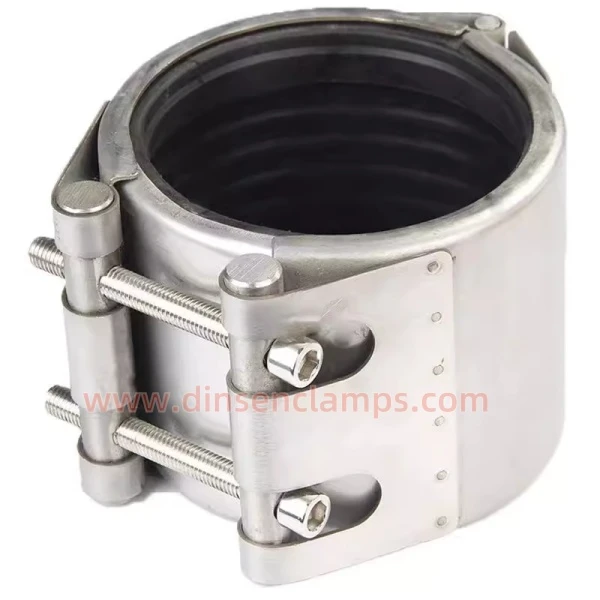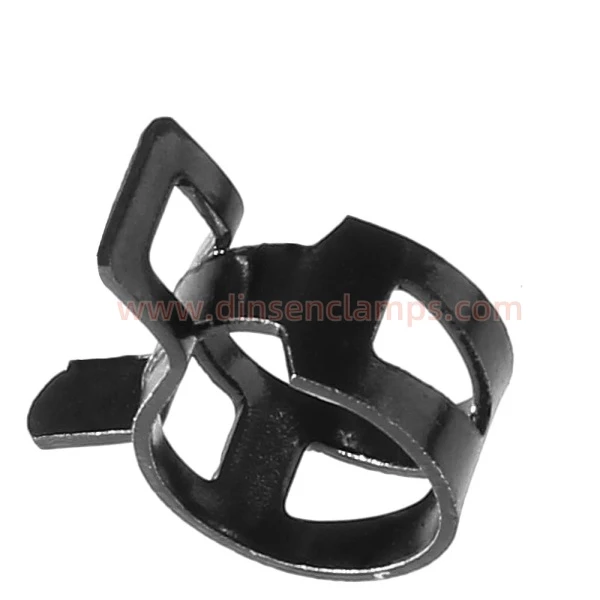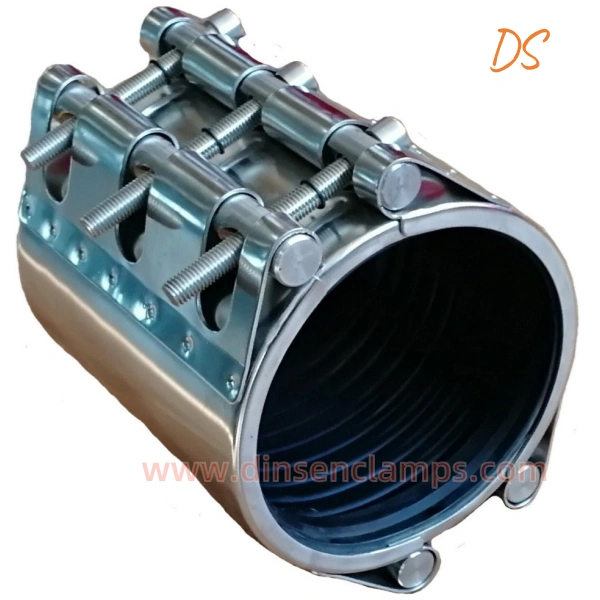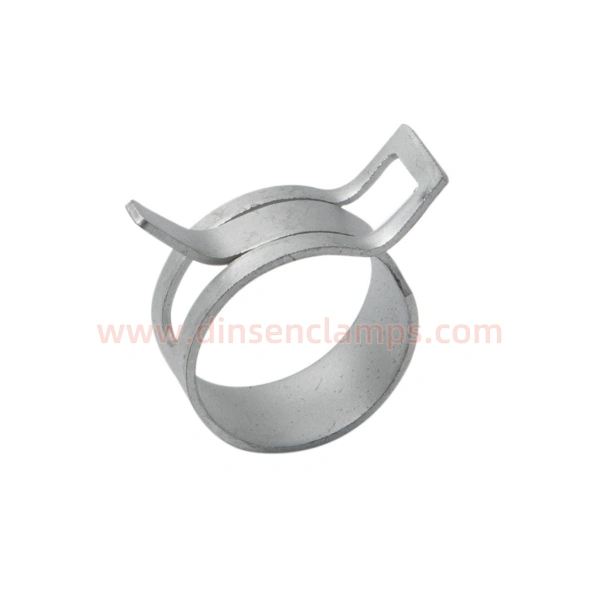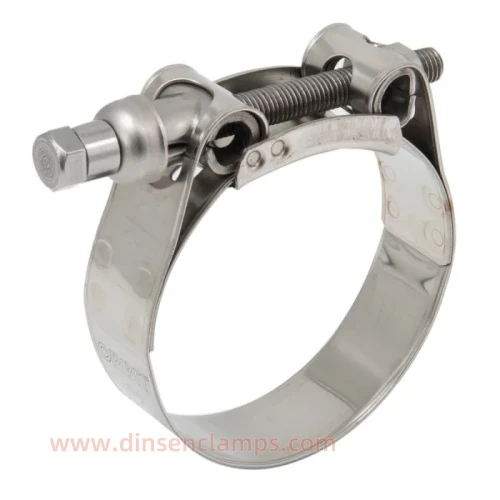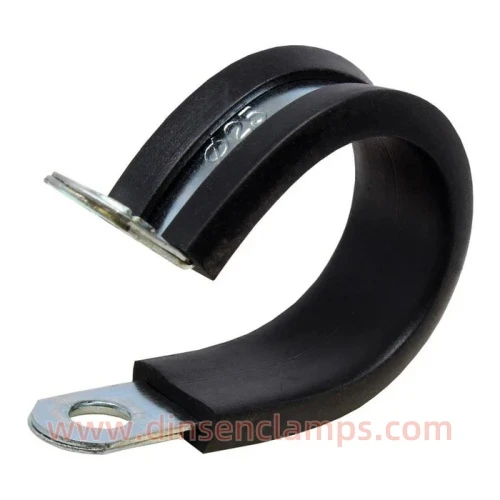What is the difference between single band pipe coupling and double band pipe coupling?
Both single-band pipe couplings and double--band pipe couplings are mechanical pipe couplings used to quickly repair pipeline leaks (such as holes, cracks, circumferential or longitudinal cracks) without the need for welding or special tools. Their main differences lie in their structure, sealing principle, pressure bearing capacity, and application scenarios.
Structure:
Single-clamp repair coupling:
Consists of a single-piece, C- or U-shaped, rigid metal shell (usually two halves joined and bolted together). A layer of elastic sealing material (such as rubber) is pre-installed or placed on-site inside the shell. Tightening the bolts on the shell clamps it against the leaking pipe, squeezing the sealing material inside and causing it to deform, filling the leak and forming a tight seal against the pipe's outer wall.
Double-clamp repair coupling:
Consists of two separate, usually narrow, rigid metal shells (clamps). A thick, specially designed elastic gasket (usually with a rectangular cross-section) is sandwiched between the two shells. Tightening the long bolts passing through the two shells pulls the two shells together, forcing the gasket trapped between them. Under the intense axial pressure, the gasket expands and deforms radially, tightly filling the leaking pipe and firmly fitting against the pipe's outer wall, forming a seal.
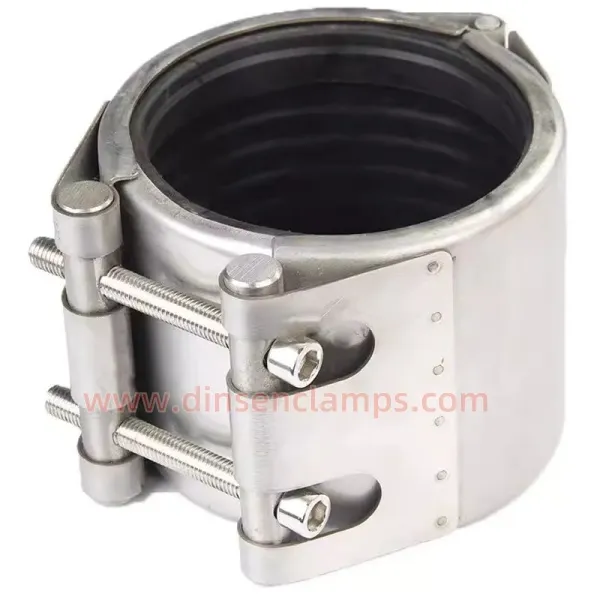
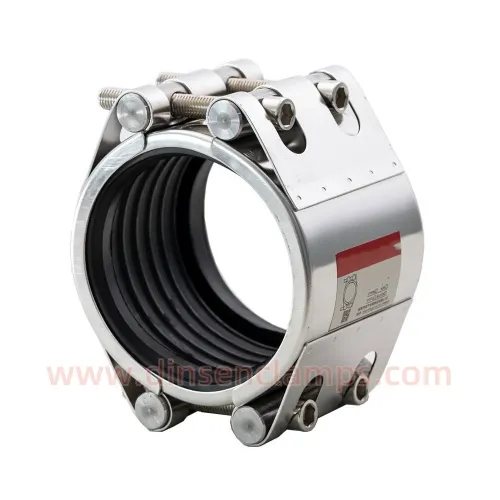
Sealing Principle and Effectiveness:
China pipe repair coupling Single-clamp repairers rely primarily on radial pressure generated by the tightening shell to directly squeeze the sealing layer against the pipe. The sealing pressure is relatively uniform, but the elastic recovery and extrusion resistance of the sealing material itself are highly demanding. For pipes with larger defects or severe deformation, the sealing effect may not be as reliable as a double-clamp repairer.
Pressure Capacity:
Double-clamp water pipe repair couplings typically have higher pressure capacity than single-clamp repair kits due to their unique structure, which generates higher radial sealing pressure and securely constrains the gasket. They are more suitable for high-pressure pipeline repairs.
Single-clamp repair kits have a relatively lower pressure capacity and are more suitable for medium- and low-pressure pipelines.
Application Scenario:
Single Clamp Patcher: Temporary or permanent repairs for small and medium-diameter pipelines (commonly DN50-DN600). Medium-to-low pressure applications (water, low-pressure steam, air, some oil products, etc.). Pipeline defects are relatively small and regular, and the pipe itself is relatively round. Scenarios requiring fast installation and cost-sensitive applications. Double Clamp Patcher: Large-diameter pipelines (most common above DN300, up to DN2000+). High-pressure applications (high-pressure steam, high-pressure gas, high-pressure oil products, etc.). Pipeline defects are large and irregular, or the pipeline is slightly flattened or deformed. Permanent repairs requiring higher reliability and longer service life.
Critical pipelines, applications where shut-down is unacceptable, or where the risk of leaks is extremely low.
Installation Complexity and Cost:
Single Clamp Patcher: Relatively simple in structure, generally quicker to install, and generally lower in cost. Double-clamp repairer: The structure is slightly more complicated (two clamps and a pad in the middle), and careful alignment and uniform tightening of bolts are required during installation. The operating requirements may be slightly higher, and the cost is usually higher than the single-clamp repairer.
-
What are Hose Clamps Called?NewsAug.01,2025
-
How Spring Clamp to InstallNewsJul.23,2025
-
What is Pipe Repair CouplingNewsJul.21,2025
-
How many types of clamps are there?NewsJun.18,2025
-
Casting ExpoNewsMay.22,2025
-
Features and Applications of Lightweight CouplingNewsMay.20,2025
-
Metal Processing, Taking Clamp as an ExampleNewsMay.19,2025

